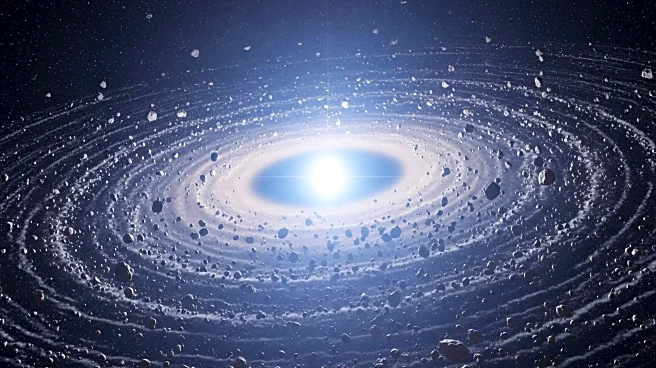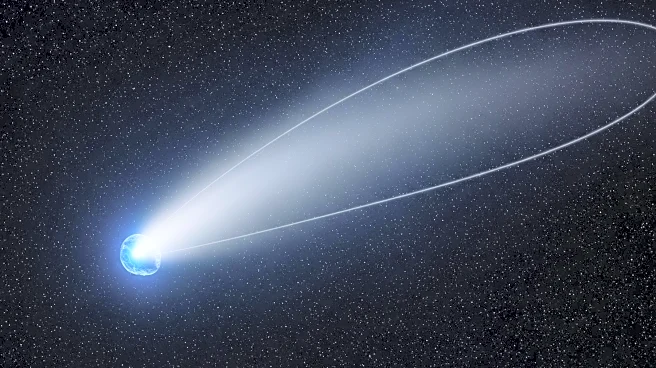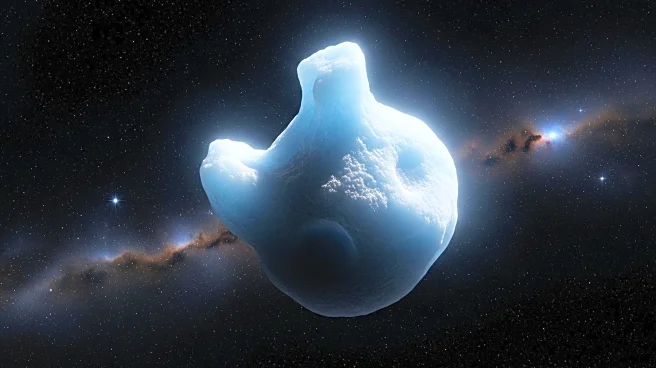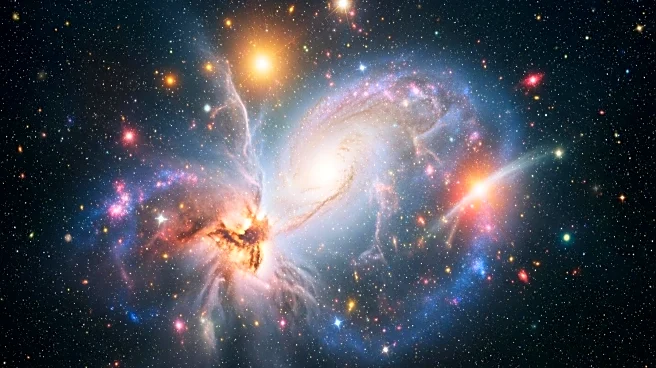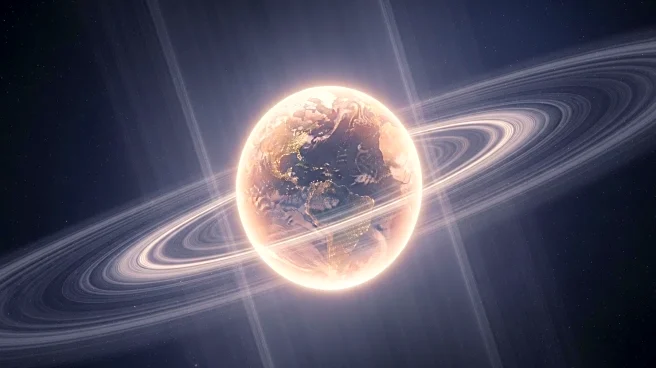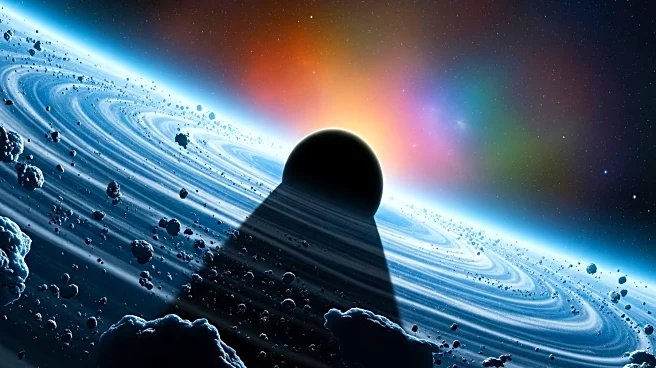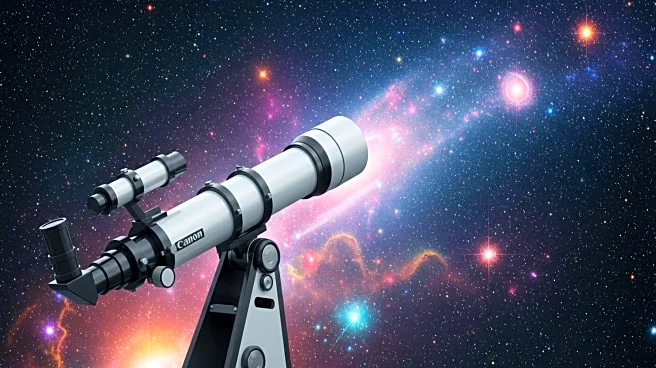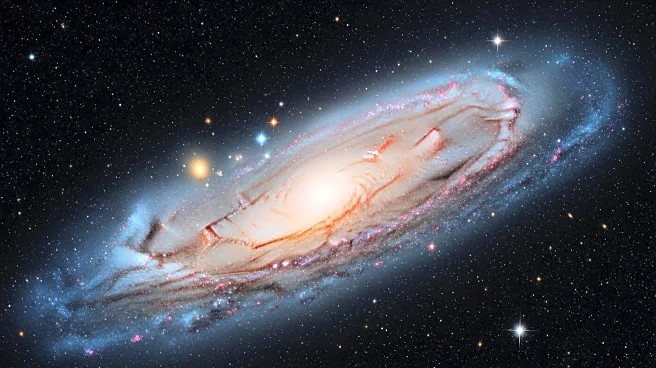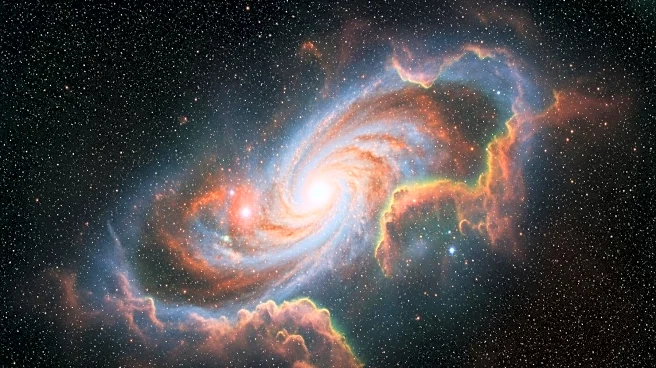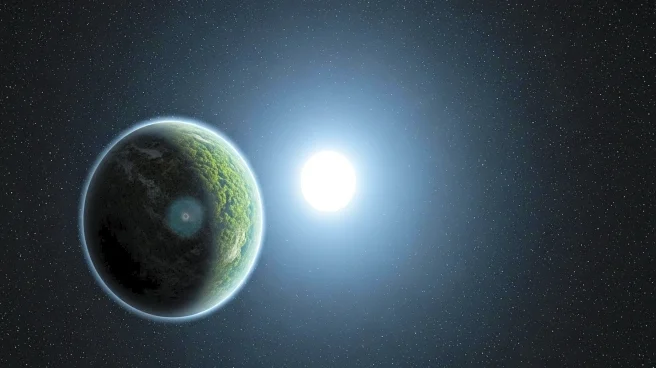What is the story about?
What's Happening?
Astronomers using the Atacama Large Millimeter/submillimeter Array (ALMA) have captured the highest resolution image of the debris disk surrounding the star Fomalhaut. The disk exhibits a unique architecture with varying eccentricity, suggesting it has been shaped by ancient planets. The research, led by teams from the Center for Astrophysics | Harvard & Smithsonian and Johns Hopkins University, reveals that the disk's eccentricity decreases with distance from the star, a phenomenon known as a negative eccentricity gradient. This finding implies the presence of a massive planet that may have influenced the disk's shape early in the system's history.
Why It's Important?
The discovery of a negative eccentricity gradient in Fomalhaut's debris disk provides new insights into the dynamics of planetary systems. Understanding how planets can shape debris disks helps astronomers infer the presence of unseen planets and reconstruct the history of planetary systems. This research contributes to the broader understanding of how planets form and evolve, offering clues about the processes that govern the architecture of planetary systems. The findings also highlight the potential for discovering hidden planets in other systems with similar disk structures.
What's Next?
Further observations with ALMA are planned to test the new model of Fomalhaut's disk and search for additional clues about the hidden planets. The research team has shared their eccentricity model code to enable other astronomers to apply it to similar systems, potentially leading to new discoveries. Continued study of Fomalhaut's disk will enhance our understanding of planetary formation and the role of debris disks in shaping planetary systems.
AI Generated Content
Do you find this article useful?
